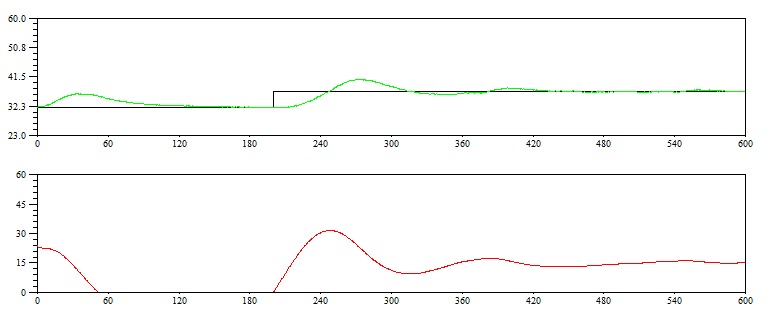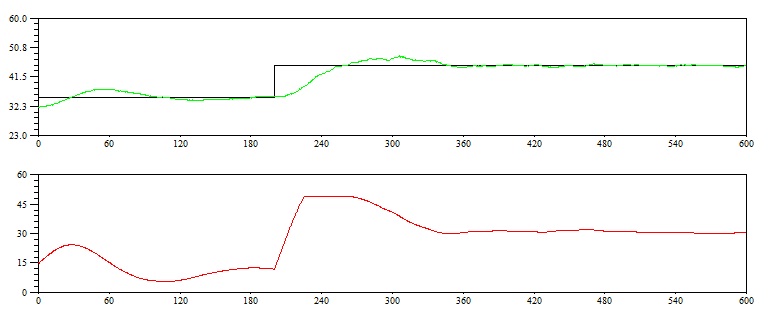Next: PI Controller using Ziegler Up: Set Point Tracking Previous: Set Point Tracking
 |
Although there is a small overshoot, the controller is able to make the actual temperature follow the set point temperature
quiet closely. Looking at higher values of set point changes, the result for set point change going from 35![]() C to 45
C to 45![]() C
is shown.
C
is shown.
 |
For a higher set point change also, the controller is able to make the temperature follow the set point closely. Notice the abrupt change in the control effort as soon as the step change in the set point is encountered.
For comparison, results of experiments done with conventional PI controller designed using the Direct Synthesis method are also shown.

|
 |
rokade 2017-04-23